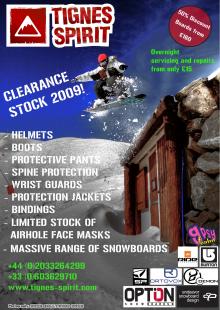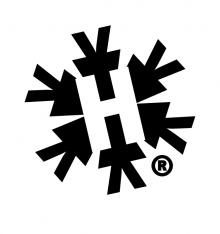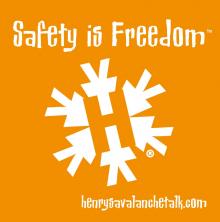When is avalanche risk factor 3 a high risk 3 and not the usual risk 3? 26/12/09
Hoping you all had a great Christmas. Here is a report for those of you planing to enjoy the skiing over the new year week. We are focusing on the implications of the weak layer that has developed in the recent cold weather. There are some days when risk level 3 needs even more caution than usual. This week looks like one of those times.
The avalanche risk factor was reduced to a level 3 on 26th December from an avalanche rating of 4 on Christmas day. Henry was able to get some great skiing in areas either where there was powder on the piste or where the slope angles where v gentle off piste and not exposed to loaded slopes above. We were able to do this thanks to the Christmas present of light snow and a couple clearing spells in the storm!
The reason the risk level went up so high was because of concerns about the weak layer. that is now present especially above 2300m.
The reson the risk level went down from 4 to 3 is becuase the risk became more localised rather than generalised. However, localised, does not mean the risk is not considerable. Remember risk level 3 is described as "Considerable" and not average or medium as is sometimes thought.
The local professionals are describing the current risk as a "high 3" rather than a "normal 3". This is because the risk factor is really "very considerable" in the locations described by Meteo France. This risk may be localised but it is very concerning and many of the pros have been taken for a short ride on a small releases triggered by their skiing activity.
This weak layer that has developed through the recent cold weather is quite widespread and looks deep. It was made worse by the cold weather and will remain under the snow pack for the whole season. This is something we will be referring to again in future ezines.
We have a special offer to help you understand this more.
Special Offer - Online talk reduced to £10 for ezine subscribers.
The online talk is normally £19.50 for one whole season, but in recognition of the first declaration of risk level 4, this week, we are doing what we can to help you stay safe whilst making sure you can have more fun.
Now for just £10 you can learn about the weak layers and how you manage your skiing to avoid getting caught out by it.
This offer closes on 1st January, so do go online and make your purchase now. You can check out the talk by watching part one for free.
To get this discount rember to use the coupon code "weaklayer".
Chris Radford. HAT ezine editor
Snow report and tips from Henry
New Snow for the Holidays, but watch out for instability!
It's great to get new snow and there's some really nice turns to be had out there (along with more snow off and on for the rest of the week). We've been out there every day enjoying it no matter how cold, windy or cloudy it's been.
Aside from sniffing out the best snow, my main goal at the moment is to stay away from the many unstable areas. Most of these unstable areas are on steep slopes (or slopes exposed to steep slopes) facing North-east; to North; to North-west.
That's not to say that everything else is totally stable though; so my advice for the moment is to either know what you're doing off-piste (even if you're going off piste right next to the groomed, secured piste) or go with someone who really understands how to have fun and be safe out there.
Here's why: there's a weak layer that is sitting under that new snow in many places at the moment. I, and all of my 'off-piste friends and colleagues', are very concerned about this layer (Wayne Watson from Alpine experience put it simply, "..the base is rotten!"). We're concerned because it can collapse with the weight of just one skier - that collapse can then release a slab avalanche under a person's feet or even on a steeper slope above them. Météo France is warning about this layer.
There have been a couple bad accidents in the Norther French Alps region in the last day or so - for an example, see: http://pistehors.com/news/forums/viewthread/412/
Tip of the Week:
Most avalanche accidents happen within view of a lift or a run.
When you are up on the mountain, the local authorities (the ski patrol or 'pisteurs') are only responsible for making the groomed pistes secure. Once you leave these secured runs, even if you go just right next to them, you're no longer in a secured area. I would never tell anyone not to go off piste; I'm off piste every day.
However, it is a good idea to know that when you shoot off next to the piste to get some nice turns in, you're in an unsecured area and you should be prepared and thinking about what you're doing. I've seen too many accidents right next to the piste - so remember: once you leave the secured pistes, your safety is your own responsibility.
Have Fun and Be Safe! Henry
PS A thank you goes out to Cécile Coléou and the team from Météo France and Centre d'Etude de la Neige for providing much of the weather and avalanche forecast information that we use to make these snow reports complete.





